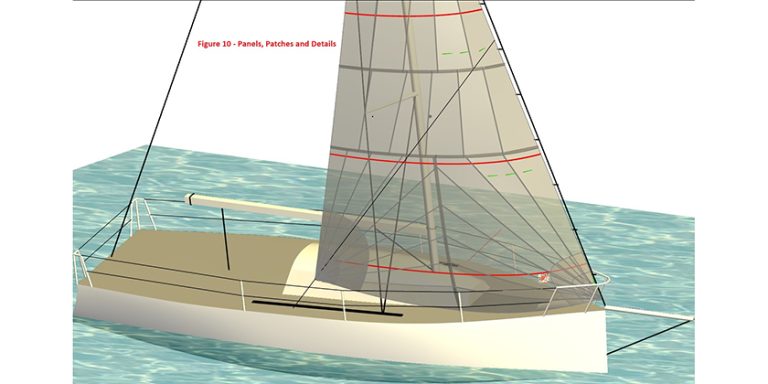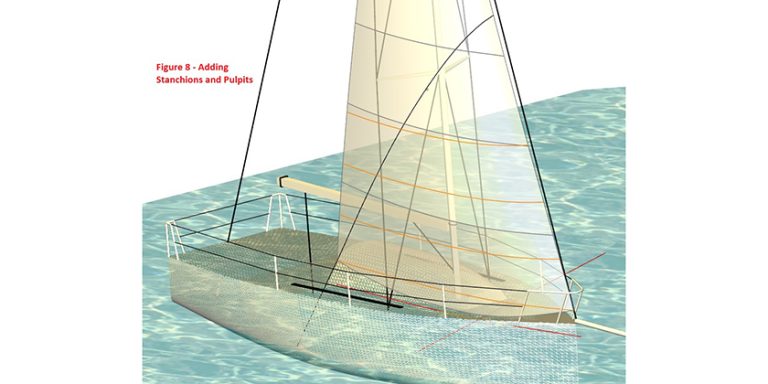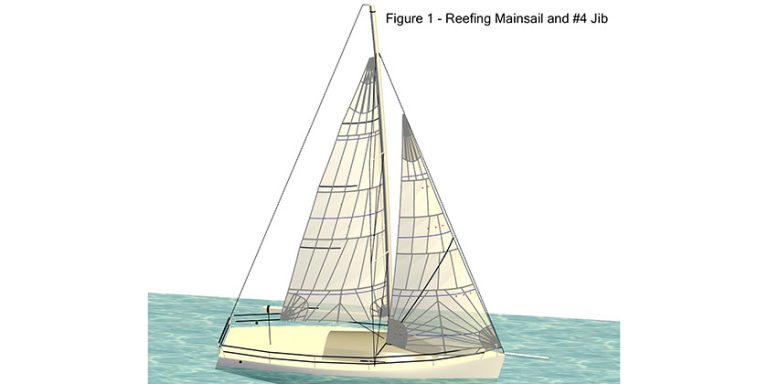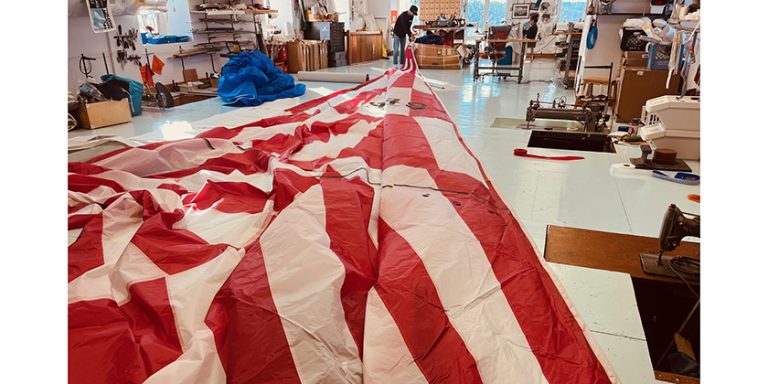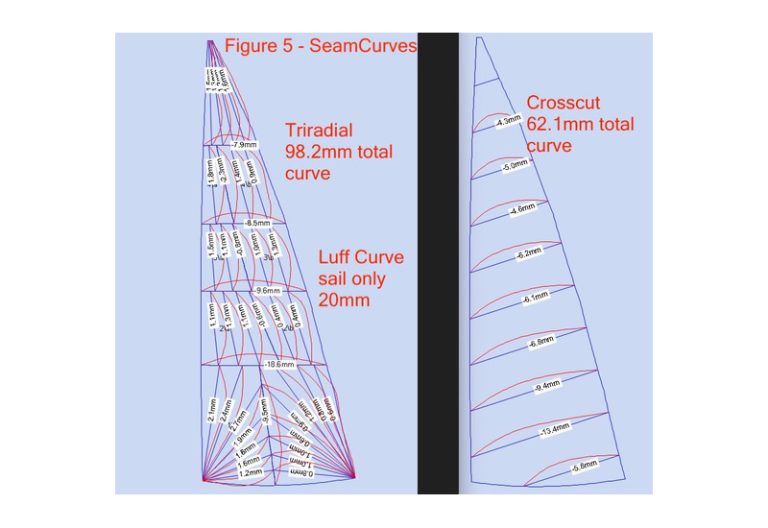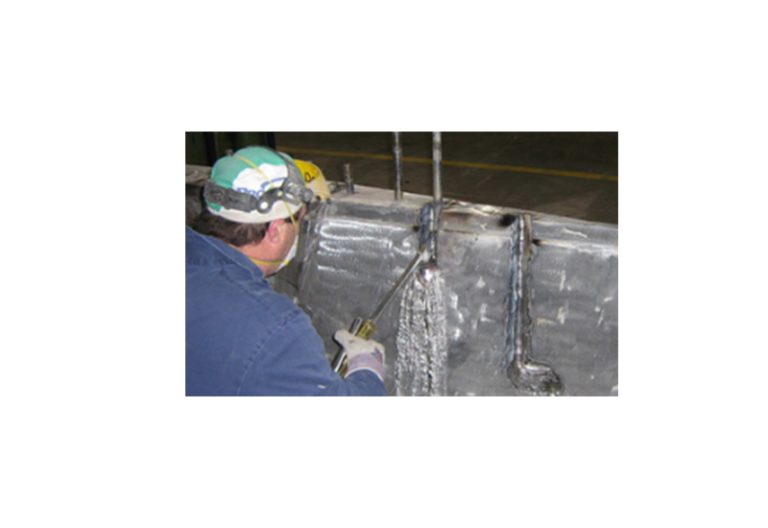Keven talks sails: Sail Handling of Modern Asymmetric Spinnakers

Apr 8, 2021
Everyone who is ordering a new Asymmetric Spinnaker always ask about how they should handle it. What are the available methods these days? Nothing, Retrieval Lines, Snuffers, Bottom Up Furling, Top Down Furling, Luff Loaded Top Down Furling.
First of all, if you have a 30’ boat or smaller, you probably don’t need anything to help handle it. Normal technique is easy enough to hoist and douse the sail with a couple of crew on board. Oversheet the sail, head dead downwind, release the tackline and gather in the foot and lower the sail down the hatch. Sounds easy, and it usually is, until it isn’t! If you want to make it a bit safer, get a webbing tack retrieval line from your sailmaker to wrestle the tack back into the hatch.
If you get at all nervous about this, don’t worry, just order a spinnaker sock (Image 1 Snuffer.jpg). It is a long sleeve with a toilet bowl seat (not really!) that covers the sail when you set it up and get all of your lines sorted out. Pull the sleeved control line and the sock rises and allows the sail to billow out. Time to take it down or the breeze is starting to heat up beyond your comfort level, ease the sheet and pull the snuffer down to extinguish the sail. After you get the sleeve half way down, release the tack line so you can stand at the mast to safely stow the sail without going onto the foredeck.
The snuffer is probably the most consistent and secure method for setting and dousing any free flying sail. It doesn’t seem as exotic as a furling, but it will always get the job done, and it has a modest cost and is has fewer moving parts for the user to understand and master.
As your boat gets bigger, so do the spinnakers and your options for handling them. There are now several reliable spinnaker furling systems on the market that can keep most of your sail handling on the water completely in the cockpit. One disadvantage with these systems is that you need to furl them to gybe in most cases. There are essentially two different types of spinnaker furling units; Bottom Up, and Top Down.
Furling options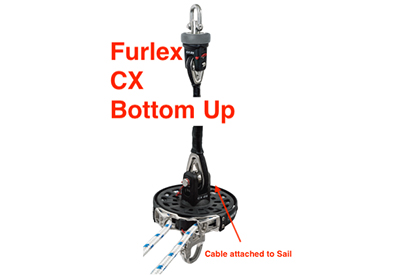 The Bottom Up system works great for flying headsails and some specialized heavier weight Code 0s. It has the sail built with a flexible torque rope in the luff tabling of the sail, and the drum rotates the rope from the bottom up and furls the sail around the luff edge. This only works if the sail has a fairly flat shape and straight luff. It is helpful to have a stoutly built stretch free luff area of the sail to help transfer the rotational loads.
The Bottom Up system works great for flying headsails and some specialized heavier weight Code 0s. It has the sail built with a flexible torque rope in the luff tabling of the sail, and the drum rotates the rope from the bottom up and furls the sail around the luff edge. This only works if the sail has a fairly flat shape and straight luff. It is helpful to have a stoutly built stretch free luff area of the sail to help transfer the rotational loads.
The Top Down system does just that, the tack of the spinnaker is attached to a bearing that only allows furling from the head of the torque rope. This helps gather up the fuller shaped spinnaker by folding the luff back on itself to allow tight rolling around the torque rope. It is a bit messy sometimes and does take a lot of pulling of the furling line to get the sail rolled up.
The Luff Loaded Top Down system is essentially the same hardware as a normal Top Down system, but a more stoutly constructed sail with a flatter luffed spinnaker that shares some of the torsion load in the luff area of the sail. This limits the ultimate downwind ability of the sail, but is easier and quicker to furl and works well on larger boats that have enough speed to keep the apparent wind further forward when trying to sail deep. 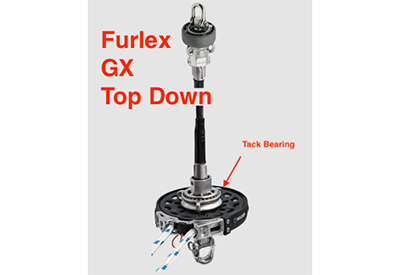
Here are some tips on the hardware side for Seldèn Furlex Bottom Up (CX), and Top Down (GX) spinnaker furling from Peter Stevens at Lightship Marine, the distributor of Seldèn and Furlex sailing products in Canada.
– Check the clearance between the forestay and/or jib furling. Remember that the new sail with new stiff head patching must fit into that small space, the more clearance you can create, the better.
– If the area is too congested, add another sheave box above the existing forestay attachment on a fractional rig, or a mast bail on a masthead rig.
– You also need to check the clearance at the bow. Is there a place to attach the drum that clears a jib furling drum, running lights, bow roller, anchor, pulpit, etc. Often a removable or fixed bowsprit should be considered.
– Use high a quality, low to no stretch halyard. Using old, worn halyards to support the AT cable will result in excessive halyard twisting and poor furling.
– Check your halyard controls, more specifically for a Code sail. Are your clutches sufficient to hold the tension required for the furling rope tension? A 2:1 halyard is usually the best option.
The benefits are considerable and are not limited to:
– For cruising, the system can be set in place before you leave the dock for the day, unfurled/furled, and then lowered when you return to the dock. No one has to go forward while underway. If the wind picks up beyond your comfort zone, the sail can be furled or unfurled again when you feel you’re under control again.
– For racing, the system can be set-up quickly and dowsed with the bowman spending minimum time on the foredeck. Also means there’s no repacking of the sail on the uphill leg minimizing the chance of the sail being hoisted clew fist (or worse) on the next set.
Shall we discuss ………. next month? Please post questions or comments and I will try to include a discussion of those point in following issues.
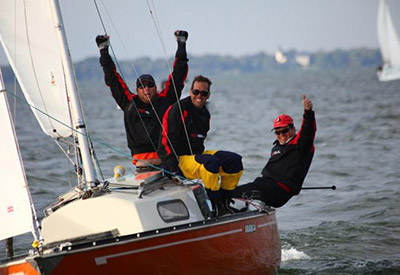 Keven Piper – Sailmaker, Bay Sails, Hamilton, Ontario
Keven Piper – Sailmaker, Bay Sails, Hamilton, Ontario
Keven Piper, two-time Shark 24 World Champion, founded Hamilton, ON-based Bay Sails in 1998.
email: baysails@gmail.com

